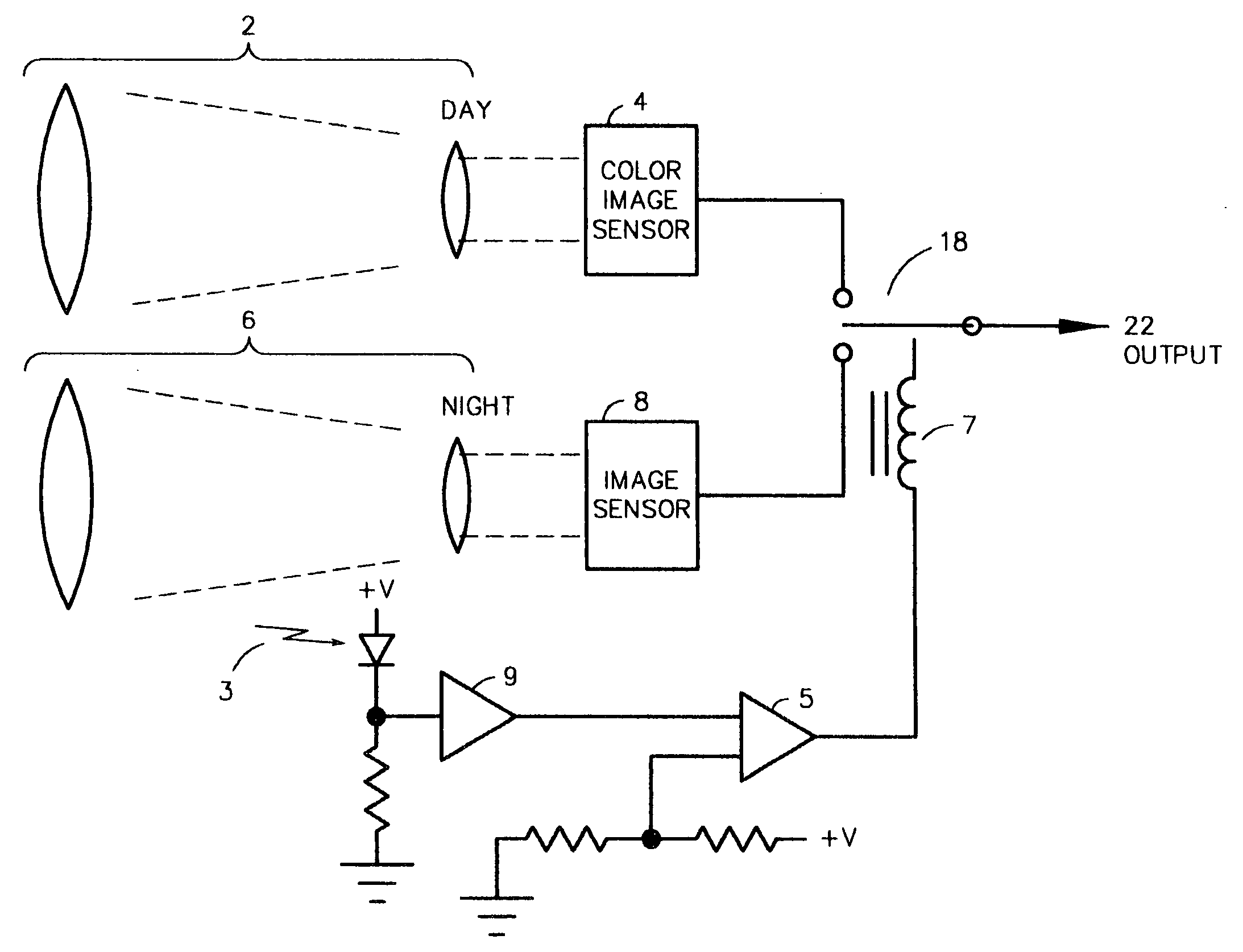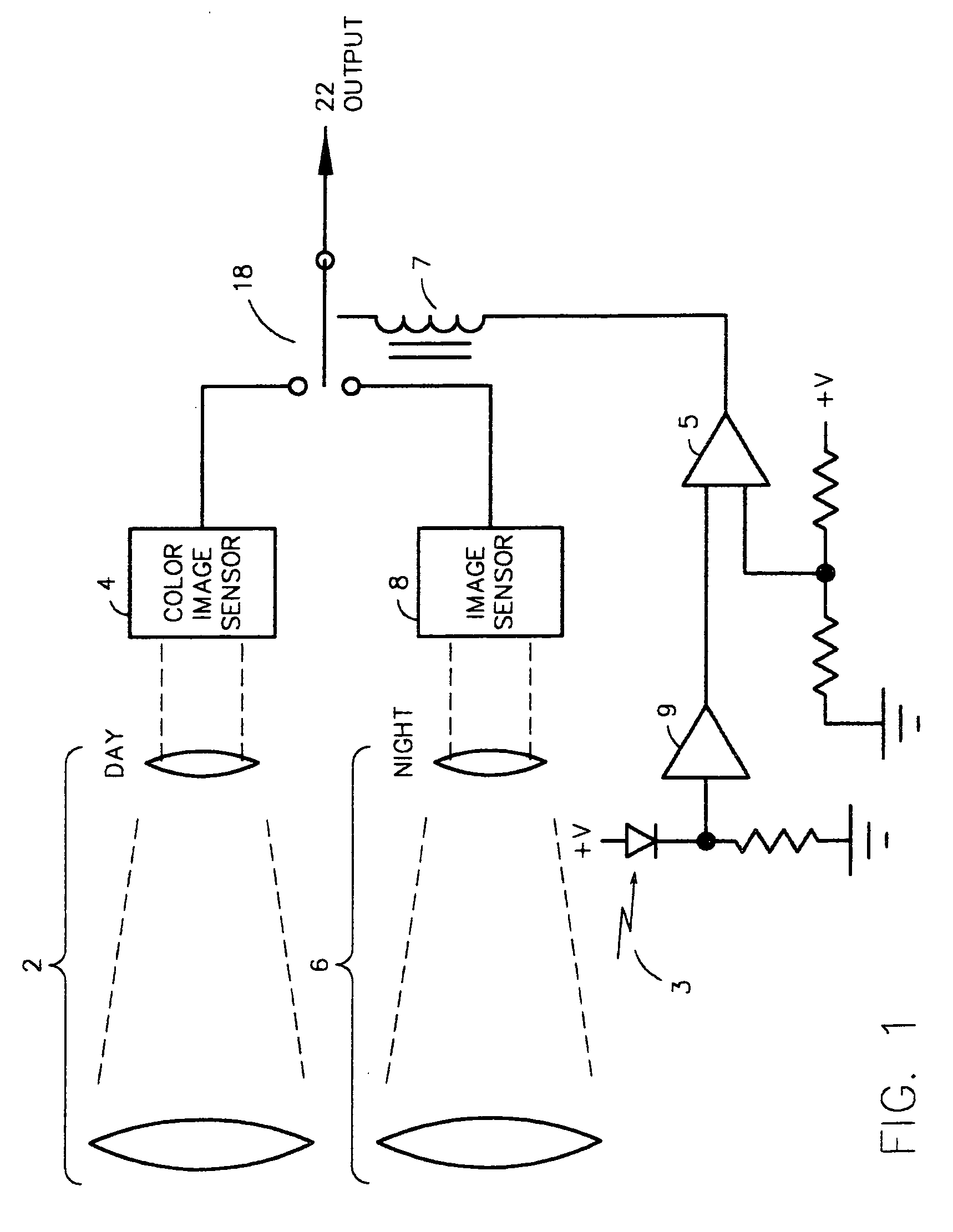Dual-mode camera
a dual-mode camera and camera body technology, applied in the field of cameras and sensors, can solve the problems of cell-to-cell non-uniformity, cell-to-cell non-uniformity, and the limitation of the dynamic range of the top end of such image sensors, so as to overcome the size and weight penalty
- Summary
- Abstract
- Description
- Claims
- Application Information
AI Technical Summary
Benefits of technology
Problems solved by technology
Method used
Image
Examples
Embodiment Construction
[0040] Referring now to FIG. 1, a prior-art system is depicted, which uses two lenses and sensors to span the desired range of ambient illumination. Daylight operation is accomplished using daylight lens 2 and color image sensor 4. Nighttime scenes are captured by lens 6 and image sensor 8, which is a monochrome area sensor optimized for high sensitivity. Typically, the overall ambient illumination is detected by, as an example, a photodiode 3. The resulting signal is buffered by buffer 9, compared with a reference value by comparator 5, and used to drive a video source selection relay 7.
[0041] The disadvantages of such a typical system are readily apparent. The overall size, weight and cost are dramatically increased by the inclusion of the additional lens.
[0042] An enhanced system, subject of the present invention, is depicted in FIG. 2. A single lens 10 is used to direct a desired scene onto the sensor optics, consisting of beamsplitting mirror 12, sensitive monochrome sensor 1...
PUM
 Login to View More
Login to View More Abstract
Description
Claims
Application Information
 Login to View More
Login to View More - R&D
- Intellectual Property
- Life Sciences
- Materials
- Tech Scout
- Unparalleled Data Quality
- Higher Quality Content
- 60% Fewer Hallucinations
Browse by: Latest US Patents, China's latest patents, Technical Efficacy Thesaurus, Application Domain, Technology Topic, Popular Technical Reports.
© 2025 PatSnap. All rights reserved.Legal|Privacy policy|Modern Slavery Act Transparency Statement|Sitemap|About US| Contact US: help@patsnap.com



